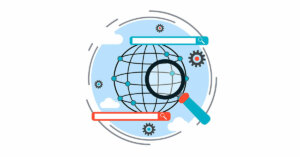How to Continuously Optimize the Customer Experience
By Nicole Hanson
February 4, 2021
Share
As we move into a digital-first world, your online customer experience is more important than ever. In an unexpected 2020, businesses had to significantly shift their customer experience strategy to keep up with new consumer expectations. These expectations will only continue to evolve in 2021, meaning your customer experience needs to be ready to evolve in turn.
So, what’s the key to building this kind of flexibility into your CX strategy? Experimentation. Rather than revamping your entire site at once and hoping it appeals more to your users, A/B testing everything you do first will help you better understand what your customers want and will give you the data to back up your decisions. By optimizing your site on a continual basis, you can keep up with changing consumer preferences in real-time. Here are three ways to ensure you continuously optimize your customer experience.
A/B Testing
A/B testing plays a huge role in on-site experimentation. It allows you to A/B test one variation of something on your website against another to see which experience your customers prefer. While people often think of A/B testing simple things like images or button colors, you can truly benefit from A/B testing anywhere on your site. Call-to-action language, promotional offers, and navigation and page layouts are just a few examples of areas you can A/B test on your website. If it’s something a customer sees or interacts with, it’s something you can A/B test.
No matter how big or small, every single piece of your website affects the customer experience and impacts their chances of conversion. Even if an A/B test doesn’t go as planned, you still gain valuable insight into your customers’ preferences.
Personalization
Much like A/B testing, personalization helps you optimize your website and enhance the customer experience. With less people shopping in stores, creating a one-to-one experience online is crucial. According to Epsilon, 80% of consumers are more likely to purchase from a brand that offers personalized experiences. With those kinds of odds, why wouldn’t you add some personalization into your CX strategy?
While personalization can seem daunting at first, it’s really about starting with the data. Of course, you don’t need to provide a unique experience for every single visitor – you can personalize in segments based on geographic data or device type, for example. The more a user comes to your website, the more historical data you will have gathered to continue offering a more personalized experience. Personalization helps your customers feel valued and will keep them coming back to your brand.
On-Site Feedback
Implementing customer feedback forms on your site can paint an even clearer picture of your visitors’ wants and expectations. Asking for on-site feedback may seem intrusive, but it can be achieved by A/B testing the right language and the amount of feedback you’re asking for.
Typically, the shorter the survey, the better. If you’re asking a visitor for feedback somewhere in the customer journey, sticking to one question is a good place to start. Our Netherlands-based client Corendon A/B tested a feedback question directly in their booking form and gained valuable insight into how they could optimize their room descriptions. You can, of course, A/B test feedback questions in other parts of the customer journey, but may find more success the longer someone has been on your site. The order confirmation page is a great place to include a more in-depth survey to see how the customer’s overall shopping experience was.
With data from A/B testing and personalization campaigns and direct customer feedback from on-site surveys, you can keep up with your visitors’ preferences and continuously optimize the customer experience.
Share
Suggested Posts
Subscribe to our blog:





